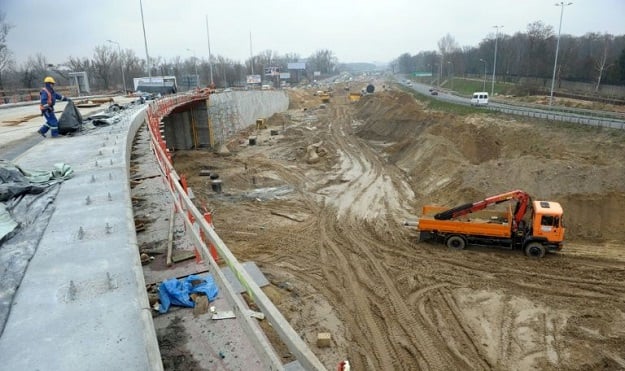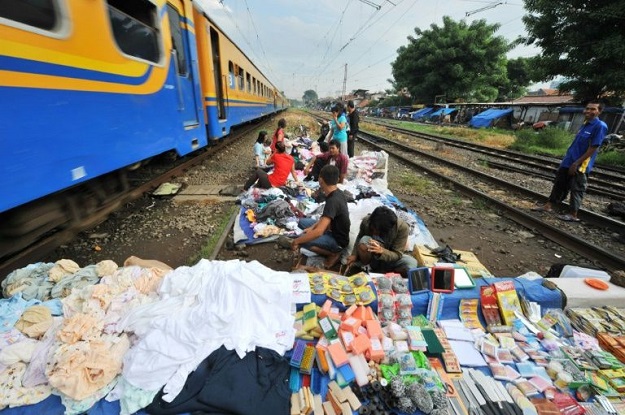
The 'One Belt, One Road' initiative, unveiled by Xi in 2013, envisages linking China with Africa, Asia and Europe through a network of ports, railways, roads and industrial parks. Xi, the most powerful Chinese leader in decades, has pushed the infrastructure drive which is central to his goal of extending Beijing's economic and geopolitical clout.
CPEC toll income — myth and reality
The initiative was enshrined in the Communist Party's constitution at a key congress last month, and some estimates say more than $1 trillion has been pledged to it, with projects proposed in some 65 countries.
But on the ground it has run into problems. Projects traverse insurgency-hit areas, dictatorships and chaotic democracies, and face resistance from both corrupt politicians and local villagers.
 Chinese infrastructure projects traverse insurgency-hit areas, dictatorships and chaotic democracies, and face resistance from both corrupt politicians and local villagers. PHOTO: AFP
Chinese infrastructure projects traverse insurgency-hit areas, dictatorships and chaotic democracies, and face resistance from both corrupt politicians and local villagers. PHOTO: AFP"Building infrastructure across countries like this is very complicated," said Murray Hiebert, from Washington think-tank the Center for Strategic and International Studies (CSIS), who has studied some of the projects in Southeast Asia. "You've got land issues, you have to hammer out funding agreements, you have to hammer out technological issues."
The China-Pakistan Economic Corridor (CPEC), a $54-billion project, was launched in 2013 linking western China to the Indian Ocean via Pakistan.
According to the Chinese foreign ministry spokesperson Hua Chunying, the One Belt, One Road initiative enjoyed broad support.
"We have seen more and more support and approval of our projects. Many projects have delivered tangible benefits to the people in these countries," she said.
Beijing won the contract to build Indonesia's first high-speed railway in September 2015, but more than two years later work has barely started on the route from Jakarta to the city of Bandung.
A recent visit to Walini, where President Joko Widodo broke ground on the train line in January last year, found excavators flattening land but no track laid for the train, which is meant to start operating in 2019.
"The first year after the ground-breaking ceremony, I did not see any progress at all," Neng Sri, a 37-year-old food stall owner from nearby Mandala Mukti village, said.
The central problem has been persuading villagers to leave their land on the proposed route, which is often an issue in the chaotic, freewheeling democracy.
The Indonesian transport ministry declined to give an update on the project and the consortium of Chinese and Indonesian companies building the line did not respond to repeated requests for comment.
The Chinese foreign ministry spokesperson, however, insisted the initiative was "moving forward smoothly". The view from the ground, however, is not always so positive.
Pak-China cultural streets on the cards
"The high-speed train... is only for super busy people who think time is money," said the villager Sri, who lives next to the Indonesian rail project. "We are not rushing to go anywhere."
 The 'One Belt, One Road' initiative, unveiled by Xi in 2013, envisages linking China with Africa, Asia and Europe through a network of ports, railways, roads and industrial parks. PHOTO: AFP
The 'One Belt, One Road' initiative, unveiled by Xi in 2013, envisages linking China with Africa, Asia and Europe through a network of ports, railways, roads and industrial parks. PHOTO: AFPOn another planned high-speed line from southern China to Singapore, the Thai stretch of the railway was delayed by tussles over financing and protective labour regulations, and it was only in July that the government finally approved $5.2 billion to start construction. Work is under way on the 415-kilometre part of the line in Laos, a staunch ally of Beijing.
But even there the project has stoked controversy due to its huge price tag - at $5.8 billion, roughly half the country's 2015 GDP - and the question of how much deeply poor Laos will gain from the project.
There have been concerns in many countries about how much they will benefit from One Belt, One Road initiatives. Gains for China, such as access to key markets and tackling overcapacity in domestic industries, are often more obvious than those for their partners.
Such worries have bedevilled projects in Central Asia, part of a potential route from western China to Europe.
At a forgotten Pakistan port, China paves a new Silk Road
These include a free trade zone at Horgos on the China-Kazakh border, notable for flashy malls on the Chinese side and relatively little on the Kazakh side, and a planned railway to Uzbekistan that has stalled in large part due to opposition in Kyrgyzstan, through which the line would run.
"I am against this railway as it stands because the financial benefits that could accrue to Kyrgyzstan accrue to [China and Uzbekistan] instead," said Timur Saralayev, head of the Bishkek-based New Generation movement.

















COMMENTS (1)
Comments are moderated and generally will be posted if they are on-topic and not abusive.
For more information, please see our Comments FAQ